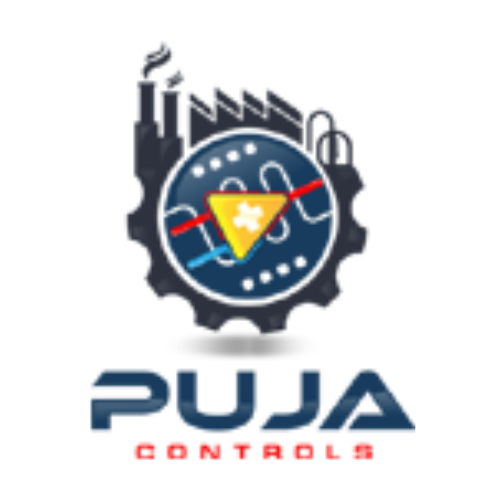What are some common causes and solutions for I/O noise and interference in PLC systems?
In the realm of industrial automation, PLC (Programmable Logic Controller) systems play a pivotal role, orchestrating the operation of machinery and processes. However, amidst their efficiency lies a challenge: I/O (Input/Output) noise and interference. These disturbances can wreak havoc on system stability, leading to malfunctions and downtime. In this comprehensive guide, we delve deep into the causes and solutions for I/O noise and interference in PLC systems, addressing 8 common culprits that every engineer and technician should be well-versed in.
Understanding I/O Noise and Interference
Before diving into the specific causes and solutions, it’s essential to grasp the nature of I/O noise and interference. I/O noise refers to unwanted electrical signals or disturbances that corrupt the intended signals in PLC systems. Interference, on the other hand, encompasses external factors such as electromagnetic radiation, radio frequency interference (RFI), and electromagnetic interference (EMI), which disrupt the communication between PLC components.
Power Supply Issues: The Silent Saboteur
A stable power supply is the backbone of any PLC system. However, fluctuations or disturbances in the power source can introduce noise into the system, jeopardizing its performance. Common issues include voltage spikes, voltage dips, and harmonics. Voltage spikes, sudden increases in voltage beyond the system’s tolerance, can occur due to lightning strikes or switching operations. Conversely, voltage dips, temporary decreases in voltage, often result from large loads being switched on/off simultaneously. Harmonics, caused by non-linear loads, further exacerbate power quality issues, leading to increased I/O noise.
Grounding Problems: Unearthing the Root Cause
Proper grounding is paramount in mitigating I/O noise and interference. However, inadequate grounding practices can inadvertently amplify noise within the system. Ground loops, caused by multiple ground connections at different potentials, create pathways for unwanted currents, resulting in signal distortion. Moreover, poor ground connections or high impedance paths can lead to voltage differentials between components, paving the way for ground noise.
Electromagnetic Interference (EMI): Taming the Invisible Beast
EMI emanates from various sources, including nearby motors, power lines, and radio transmissions. These electromagnetic fields can induce unwanted voltages in nearby cables and components, disrupting the normal operation of PLC systems. Shielding cables, utilizing twisted pair wiring, and implementing ferrite cores are effective strategies to mitigate EMI. Additionally, relocating sensitive components away from EMI sources can minimize their impact on the system.
Radio Frequency Interference (RFI): Navigating the Airwaves
RFI, characterized by electromagnetic waves in the radio frequency spectrum, poses a significant threat to PLC systems, particularly in industrial environments bustling with wireless communication devices. Microwave ovens, mobile phones, and radio transmitters are common sources of RFI. To combat RFI, engineers employ frequency filtering techniques, such as low-pass and high-pass filters, to attenuate unwanted signals while preserving essential communication within the PLC network.
Crosstalk: When Signals Collide
Crosstalk occurs when electromagnetic fields from adjacent conductors induce voltages in neighboring cables, leading to signal interference. In PLC systems, crosstalk often occurs in densely populated control panels or cable trays, where multiple signal cables run in close proximity. Shielding individual cables, maintaining proper spacing between conductors, and utilizing twisted pair wiring can mitigate the effects of crosstalk, ensuring signal integrity.
Environmental Factors: Nature’s Influence
External environmental factors, such as temperature fluctuations, humidity levels, and airborne contaminants, can impact the performance of PLC systems. Extreme temperatures can cause electronic components to drift out of specification, resulting in increased susceptibility to noise. High humidity levels may accelerate corrosion on connectors and terminals, compromising signal integrity. Airborne contaminants, such as dust and debris, can infiltrate sensitive components, leading to short circuits and intermittent faults.
Component Aging: The Silent Deterioration
Over time, components within PLC systems undergo aging, leading to degradation in performance and reliability. Capacitors, in particular, are susceptible to drying out or leaking electrolyte, causing fluctuations in voltage regulation. Similarly, semiconductor devices may experience degradation in insulation properties, increasing leakage currents and susceptibility to noise. Regular preventive maintenance, including component inspection and replacement, is essential to mitigate the impact of aging on PLC systems.
FAQs (Frequently Asked Questions)
1. How do I identify the presence of I/O noise in PLC systems? To identify I/O noise, engineers often conduct signal integrity tests using oscilloscopes or spectrum analyzers. These tests help pinpoint irregularities in signal waveforms, indicative of noise interference.
2. Can inadequate shielding contribute to I/O noise in PLC systems? Yes, inadequate shielding can exacerbate I/O noise issues by allowing external electromagnetic fields to penetrate signal cables. Proper shielding techniques, such as metal enclosures and shielded cables, are essential to minimize noise ingress.
3. What role does firmware/software play in mitigating I/O noise? Firmware and software updates may include optimizations or algorithms designed to filter out noise or enhance signal processing capabilities, thereby reducing the impact of I/O noise on PLC systems.
4. Are there industry standards for mitigating I/O noise in PLC systems? Yes, various industry standards, such as IEC 61000 series for electromagnetic compatibility (EMC), provide guidelines and best practices for mitigating I/O noise and interference in PLC systems.
5. How can I prevent ground loops in PLC installations? Preventing ground loops involves ensuring that all ground connections are made at a single point, known as a star point, thereby eliminating potential differences between grounding points and minimizing ground loop currents.
6. What measures can be taken to mitigate the impact of environmental factors on PLC systems? To mitigate the impact of environmental factors, PLC systems should be installed in controlled environments with stable temperatures and humidity levels. Additionally, implementing protective enclosures and air filtration systems can safeguard sensitive components from airborne contaminants.

